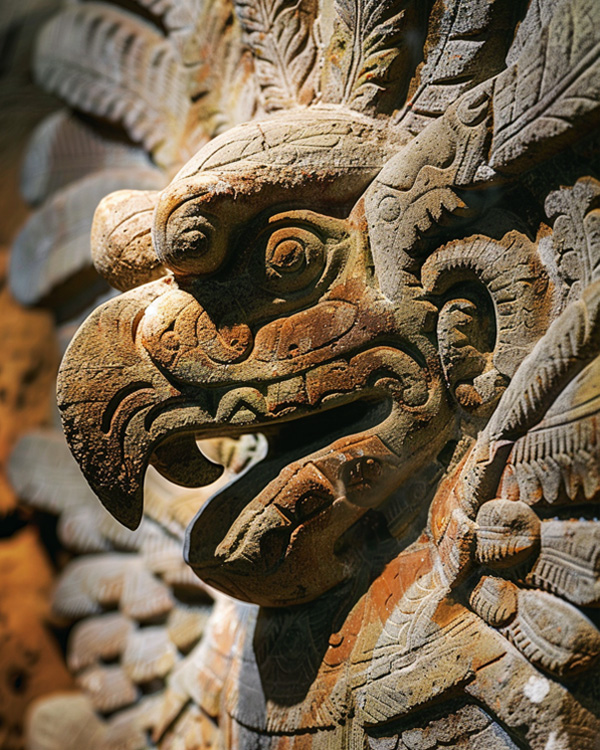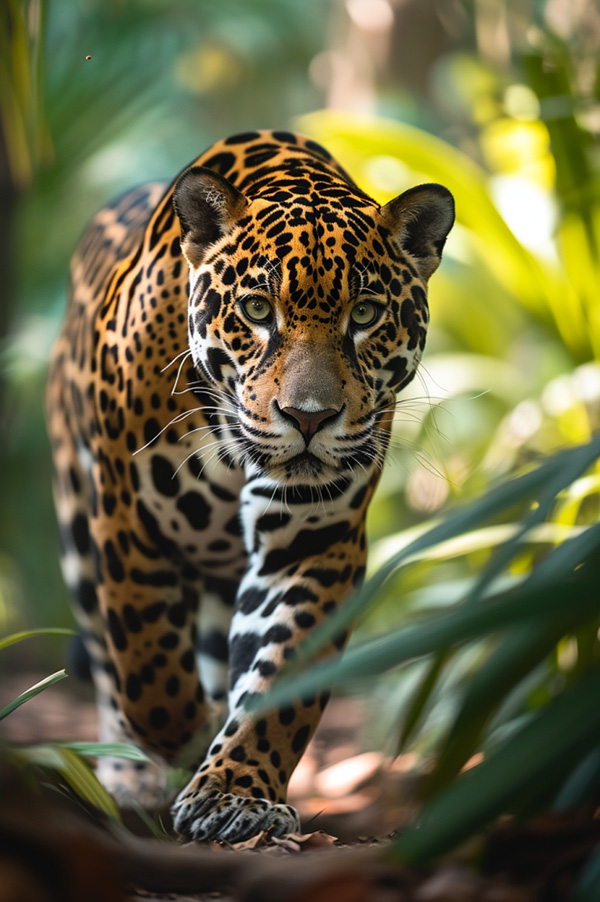Introduction to the Fifth World Prophecies in Indigenous Cultures

Understanding the Concept of the Fifth World
The notion of the Fifth World features prominently in the beliefs of various indigenous cultures, including the Hopi, Mayan, Aztec, and Olmec civilizations. These ancient societies, steeped in spiritual traditions, view the progression of worlds as significant phases in the cosmic cycle of life and rebirth. The transition from the Fourth to the Fifth World is not just a change in eras but symbolizes a profound transformation in human consciousness and the natural world.
The Cultural Tapestry of Indigenous Civilizations
At the core of this exploration are the Hopi, Mayan, Aztec, and Olmec cultures, each boasting a unique and intricate history. The Hopi Tribe, residing in the southwestern United States, are known for their deep spiritual connection to the land and their prophetic teachings. In Central America, the Mayan and Aztec civilizations are celebrated for their advanced astronomical knowledge and complex religious systems. The Olmecs, often considered the forerunners of later Mesoamerican cultures, contribute significantly to this rich historical narrative with their mysterious origins and legacy.
Transitioning from the Fourth to the Fifth World
The shift from the Fourth to the Fifth World in these cultures’ cosmologies is more than a chronological change. It represents a spiritual awakening, an evolution in understanding the interconnectedness of all beings and the universe. Each culture interprets this transition uniquely, yet common threads speak of renewal, rebirth, and a deeper awareness of our place within the larger cosmic order.
For the Hopi, this transition signifies an opportunity for humanity to realign with natural laws and spiritual principles. The Mayan and Aztec perspectives often emphasize a recalibration of time and energy, aligning with their intricate calendar systems and astrological insights. The Olmecs, though their civilization has long since faded into history, have left symbols and structures that scholars and spiritual seekers interpret as pointing towards a similar shift in human consciousness.
A Journey into Ancient Wisdom
The Fifth World prophecies of these indigenous cultures offer a glimpse into ancient wisdom. They challenge us to reflect on our relationship with the earth, each other, and the greater universe. As we dive deeper into these traditions in subsequent sections, we’ll explore the intricate symbolism and profound teachings that these civilizations have bequeathed to the modern world, teachings that continue to inspire and guide us in our quest for understanding and harmony.
The Feathered Serpent in
Indigenous Culture and Spirituality
Bridging the Human and Divine
The Feathered Serpent, a prominent figure across various Mesoamerican cultures, stands as a powerful symbol intertwining the realms of earth and sky, human and divine. Known as Quetzalcoatl among the Aztecs, Kukulkan to the Mayans, and related to significant figures in Olmec civilization, this deity encapsulates a myriad of meanings and attributes. It is a representation not only of physical entities — like serpents and birds — but also of philosophical concepts such as creation, knowledge, and the duality of life.
Symbolism of the Feathered Serpent
In these indigenous cultures, the Feathered Serpent is often seen as a creator deity, a bringer of knowledge, and a bridge between the earth and the cosmos. Its imagery, combining the serpent, symbolizing earth, fertility, and renewal, with the majestic and divine aspects of the bird, forms a powerful symbol of unity and balance. This deity’s multifaceted nature speaks to the complex understanding of the world held by these ancient civilizations, where spiritual and earthly realms were closely intertwined.
Influence on Cultural Practices and Beliefs
The reverence for the Feathered Serpent permeated many aspects of Aztec and Mayan life. In architecture, majestic pyramids and temples were built in its honor, aligning with celestial events and showcasing the technical and spiritual sophistication of these cultures. The Feathered Serpent played a vital role in rituals and ceremonies, often associated with agricultural cycles, rain, and fertility.
The impact of this deity extended beyond mere worship; it influenced societal norms, philosophical thought, and the day-to-day lives of the people. The teachings and stories associated with the Feathered Serpent helped shape the moral and ethical frameworks within these communities, emphasizing the importance of balance, respect for nature, and the pursuit of knowledge.
in Mayan and Aztec Civilizations
As we conclude our overview of the Feathered Serpent as a unifying symbol across Mesoamerican cultures, our journey takes us deeper into the specific roles and representations of this deity in Mayan and Aztec societies. In the following section, we will explore how the Feathered Serpent was revered in these civilizations, its architectural and artistic depictions, and its enduring legacy in rituals and cultural consciousness. Join us as we continue to unravel the mysteries of this ancient symbol and its profound influence on the spiritual and societal structures of the Mayans and Aztecs.

DIscovering Serpent Energy
Quetzalcoatl
(Aztec)
Known as the “Feathered Serpent,” this deity is one of the most important gods in Aztec mythology,
symbolizing creation, culture, and civilization.
Kukulkan
(Mayan)
Similar to Quetzalcoatl, Kukulkan is revered as a “Plumed Serpent” deity in Mayan culture, associated
with creation, wind, and water.
Coatlícue
(Aztec)
Although not a serpent deity in the traditional sense, Coatlícue, the mother of Quetzalcoatl, is often
depicted with serpents as part of her garb, representing the earth and its fertility.
Xiuhcoatl
(Aztec)
A fire serpent associated with the Aztec god of fire and war, Huitzilopochtli. It symbolizes the dry season
and is a part of Aztec ritual warfare.
Mixcoatl
(Aztec)
Often represented as a cloud serpent, Mixcoatl is the god of the hunt and the Milky Way, intertwining
themes of hunting and celestial phenomena.
Gucumatz
(K’iche’ Maya)
A variation of the Feathered Serpent deity in the K’iche’ Maya tradition, similar in attributes to
Kukulkan and Quetzalcoatl.
Avanyu
(Puebloan)
A Tewa deity, Avanyu is a water serpent who controls the weather and brings rain, illustrating the
serpent’s connection with water and weather in Puebloan beliefs.

The Feathered Serpent in
Mayan and Aztec Civilizations
A Central Figure in Mesoamerican Mythology
The Feathered Serpent, a deity revered in both Mayan and Aztec cultures, stands as a testament to the spiritual and cultural heritage of these ancient civilizations. Known as Kukulkan to the Mayans and Quetzalcoatl to the Aztecs, this deity was not only a symbol of wisdom and creation but also played a pivotal role in shaping the religious and societal framework of these cultures.
In Mayan Civilization – Kukulkan
In Mayan culture, Kukulkan was revered as a bringer of knowledge, a creator god, and a symbol of the unity of heaven and earth. This deity’s influence can be seen in the grand architecture of the Mayans, most notably in the pyramid of Chichén Itzá. During the spring and autumn equinoxes, a play of light and shadow creates the illusion of a serpent slithering down the pyramid’s steps, a physical manifestation of Kukulkan’s descent to earth. This event attracted large gatherings, highlighting the importance of Kukulkan in Mayan rituals and community life.
In Aztec Civilization – Quetzalcoatl
For the Aztecs, Quetzalcoatl was a multifaceted god of wind, air, and learning. Regarded as the patron of priests, the inventor of the calendar and books, and a symbol of death and resurrection, Quetzalcoatl was central to Aztec religion and mythology. His temple at the archaeological site of Teotihuacan stands as a symbol of his enduring legacy. The Aztecs celebrated Quetzalcoatl with festivals and ceremonies, reflecting his influence on their daily life and their understanding of the cosmos.
Artistic and Architectural Legacy
Both cultures left a rich artistic legacy in honor of the Feathered Serpent. From stone carvings and pottery to elaborate temple designs, the imagery of the Feathered Serpent was a common motif, representing spiritual insight, balance, and the cyclical nature of life.
the Serpent Mound in North America
As we explore the significance of the Feathered Serpent in the Mayan and Aztec civilizations, we find a link to similar serpent symbolism in North American indigenous cultures. Our next section will focus on the Serpent Mound in southern Ohio. This intriguing site offers a unique perspective on the serpent imagery’s widespread influence and significance in indigenous beliefs across the Americas. Join us as we expand our exploration to understand how these diverse cultures, though geographically distant, share common spiritual threads embodied in the serpent symbol.
The Serpent Mound
and North American Indigenous Cultures
Unveiling the Mystery of the Serpent Mound
The Serpent Mound in southern Ohio stands as an enigmatic and ancient symbol of North American indigenous cultures. This prehistoric effigy mound, shaped like a serpent, stretches over a quarter of a mile and has fascinated archaeologists, historians, and spiritual seekers alike. Its origins and purpose, shrouded in mystery, offer a glimpse into the spiritual life of the indigenous people who built it.
Historical Context and Significance
The Serpent Mound is believed to date back to the Adena-Hopewell culture (800 BC – 100 AD), although some suggest later cultures, like the Fort Ancient (1000 – 1650 AD), may have constructed or used the site. Regardless of its exact age, the mound represents a remarkable example of earthen sculpture and an insight into the spiritual world of its creators. The serpent figure, with its coiled tail and open mouth, is often interpreted as a symbol of cosmic significance, embodying themes of rebirth, transformation, and the connection between the earthly and celestial realms.
Serpent Symbolism in Indigenous Cultures
Serpent symbolism is prevalent in many indigenous cultures across North America, including the Hopi. It often represents powerful spiritual forces and is associated with water, fertility, and the underworld. The Serpent Mound aligns with this broader tradition of serpent reverence, indicating a deep, spiritual connection to this powerful symbol. The mound’s alignment with astronomical events further emphasizes its creators’ sophisticated understanding of the cosmos.
Pilgrimage and Preservation
Today, the Serpent Mound is a site of pilgrimage for those interested in ancient cultures and spiritual traditions. It also stands as a testament to the need for preserving such sites, offering invaluable insights into the history and beliefs of the indigenous peoples of North America.
The Feathered Serpent and the Fifth World
As we reflect on the Serpent Mound and its significance in the tapestry of indigenous spiritual symbolism, we prepare to transition to our next topic. We’ll explore how the imagery and concepts related to the Feathered Serpent intertwine with the Fifth World prophecies across different cultures. This exploration will reveal the interconnectedness of these symbols in a broader cultural and spiritual context, showcasing the Feathered Serpent’s role in unifying themes of creation, knowledge, and cosmic balance. Join us as we dig deeper into these ancient symbols and their enduring impact on indigenous spirituality and worldviews.


The Feathered Serpent and the Fifth World
Synthesizing Ancient Prophecies and Symbols
The concept of the Fifth World prophecies, as envisioned by various indigenous cultures, and the symbol of the Feathered Serpent come together to form a unified vision of spiritual awakening and transformation. These ancient narratives and symbols, rich in meaning and significance, provide a profound insight into the interconnectedness of life, nature, and the cosmos.
The Feathered Serpent – A Bridge to the Fifth World
The Feathered Serpent, known as Quetzalcoatl in Aztec mythology and Kukulkan in Mayan beliefs, emerges as a central figure in the transition to the Fifth World. This deity, representing the fusion of earthly and celestial energies, symbolizes the awakening of consciousness and the rebirth of the world. In the Fifth World prophecies, this awakening is often associated with a shift towards a deeper understanding and harmony with the natural world, echoing the teachings of the Feathered Serpent.
Interpretations Across Cultures
In Hopi prophecy, the transition to the Fifth World is seen as a crucial time of purification and realignment with spiritual values. Similarly, in Mayan and Aztec cultures, the Feathered Serpent is revered as a symbol of knowledge, balance, and connection between the physical and spiritual realms. This deity’s presence in the prophecies of these diverse cultures underscores its significance in the collective indigenous narrative of renewal and transformation.
Contemporary Relevance of Ancient Wisdom
These ancient prophecies and symbols hold significant relevance in our contemporary era, challenging us to rethink our relationship with the earth and each other. They call for a collective awakening to the principles of balance, respect for nature, and the need for a harmonious coexistence with all life forms. The teachings of the Feathered Serpent and the vision of the Fifth World encourage a return to these fundamental values, which are essential for the sustainability and health of our planet.
The Teachings of Joseph Rael
As we conclude our exploration of the Feathered Serpent’s role in the Fifth World prophecies, we prepare to transition into the teachings of Joseph Rael, also known as Beautiful Painted Arrow. Rael, a visionary and respected elder, offers a unique perspective that bridges indigenous wisdom and contemporary understanding. His teachings provide a deeper exploration of spiritual concepts and practices, enriching our understanding of the profound insights offered by indigenous traditions. Join us as we dive into the world of Joseph Rael, discovering how his teachings resonate with the ancient prophecies and symbols we have explored.
